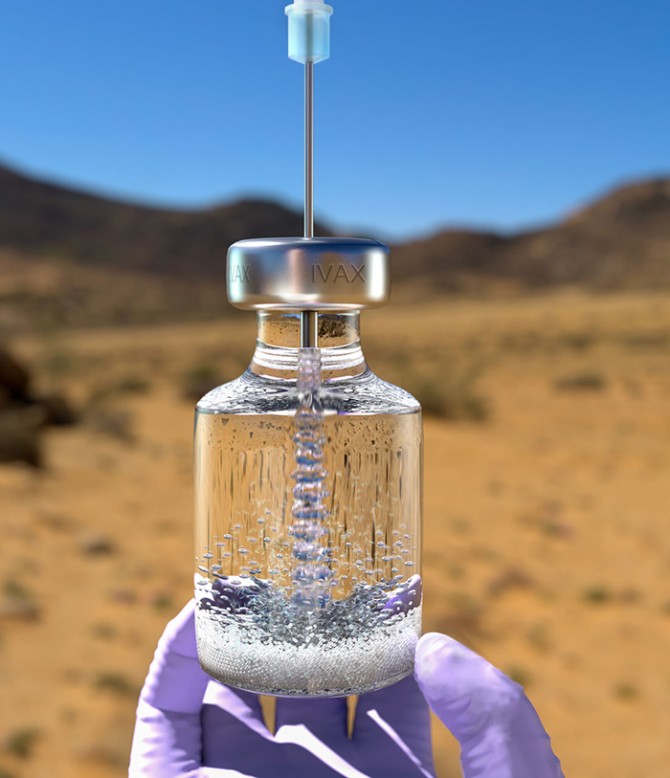Cell-free biotech enables shelf-stable vaccines on demand
By David Nutt
Researchers from Cornell and Northwestern University have devised a new method of using extracts derived from bioengineered bacteria to create vaccines that protect against life-threatening infections caused by pathogenic bacteria.
Because the technology can be easily reconfigured for different pathogenic foes and freeze-dried for portability and refrigeration-free storage, it could be a game-changing approach to fighting infection, especially in locations where access to such medicines is limited.
The team’s paper, “On-Demand Biomanufacturing of Protective Conjugate Vaccines,” published Feb. 3 in Science Advances. The paper’s co-lead authors are Jessica Stark ’12, now a postdoctoral researcher at Stanford University, and doctoral student Thapakorn Jaroentomeechai.
The project is the latest iteration of an ongoing collaboration between Matthew DeLisa, the William L. Lewis Professor in the Smith School of Chemical and Biomolecular Engineering and director of the Cornell Institute of Biotechnology, and Michael Jewett, a professor of chemical and biological engineering at Northwestern University and director of Northwestern’s Center for Synthetic Biology, both co-senior authors of the paper.
In 2018, their team jointly pioneered a method for cell-free biomanufacturing in which engineered E. coli bacteria are used as a kind of chassis. The bacteria are equipped with biosynthetic machinery for protein glycosylation – the process of attaching a complex carbohydrate to a protein – which is something that E. coli cannot do naturally. These bacteria are then used to source cell-free extracts, which are enriched with all of the ingredients for making bespoke glycoproteins. The technology opened the door to the cell-free production of COVID-19 therapeutics. Importantly, eliminating the need for living cells affords many advantages, including lower cost-of-goods and faster production.
“This new paper is the next conceptual leap for the technology,” DeLisa said. “By changing the composition of the carbohydrate structures that are made, we can – by design – create glycoproteins that have the potential to protect against infectious disease.”
Certain glycoproteins, known as conjugate vaccines, have long been known to be a powerful agent in fighting bacterial infections. For example, conjugates were instrumental in the global eradication of a type of Haemophilus influenzae called Hib disease.
Conjugate vaccines work by packaging a weak antigen, such as a carbohydrate, with a stronger protein carrier to maximize the immune system’s response. They combat specific infections by targeting complex carbohydrate structures – such as capsular polysaccharides or lipopolysaccharides – that cling to the surface of bacteria. Just as every human has a unique fingerprint, every species of bacteria has its own unique polysaccharide structure, and these can be used to distinguish between harmful pathogens and friendly bacteria, such as gut microbes.
However, conjugate vaccines are difficult and expensive to manufacture. The multi-step process requires cultivation of a pathogen – in order to isolate the polysaccharide that will be targeted – and a carrier protein that must be separately mass produced. Then the two components need to be joined together with “messy” conjugation chemistry that can be inefficient and difficult to control, according to DeLisa. Large-scale cultivation of pathogenic bacteria is also quite costly because of the associated biosafety hazards and logistical challenges.
“The technology we’ve created sidesteps a lot of these issues,” DeLisa said. “We’re basically taking a multi-step process and compressing it down into a single reaction step, where the oligosaccharide and carrier protein are made at the same time, and then conjugated together in a single pot.”
All the reaction components, including the polysaccharides, are derived from the engineered E. coli chassis, which itself is non-pathogenic. Therefore, there is no need to ever handle or cultivate a pathogen, making the process far safer than the conventional method. In addition, while the extracts can be used immediately following their preparation to mass produce vaccine doses, they can also be preserved for future use by freeze-drying, which reduces their storage volume and increases their shelf-life at ambient temperatures.
“By freeze-drying these systems, the extracts can be readily stockpiled for rapid vaccine production in response to a pandemic and can be easily transported for point-of-care production, which could create new opportunities for distributed manufacturing,” DeLisa said. “And then when you need them, you just add a drop of water. The rehydration process activates all the reaction components and essentially kick-starts the process of making the vaccines.”
By eliminating the need for complicated supply chains and extreme refrigeration, the platform will also be a powerful tool for low-resource regions, which often do not have access to expensive facilities and refrigerated storage.
“We tend to make medicines in large-scale facilities that can cost hundreds of millions of dollars or more,” Jewett said. “We also have to rely on refrigerated supply chains. These issues limit the overall access to medicines. We need to rethink making and delivering medicines.”
The technology, which the team calls iVAX (short for in vitro bioconjugate vaccine expression), has already attracted the support of the Bill & Melinda Gates Foundation, which last year awarded the researchers a $100,000 seed grant to develop the technology to address diarrheal diseases in developing countries.
“We hope to make a universal vaccine candidate against diarrheal pathogens using the technology,” DeLisa said. “We have a firm understanding of how to make these conjugates, so now we’re starting to shift our focus to more of the biomanufacturing aspects. We’re also really excited about the opportunity to use our expertise to tackle a really profound problem that is global in terms of the scope.”
Co-authors include doctoral student Tyler Moeller; Taylor Stevenson, Ph.D. ’17; and researchers from Northwestern University.
In addition to the Gates Foundation, the research was supported by the Defense Threat Reduction Agency; the National Science Foundation; the David and Lucile Packard Foundation; and the Dreyfus Teacher-Scholar program.
Media Contact
Get Cornell news delivered right to your inbox.
Subscribe

